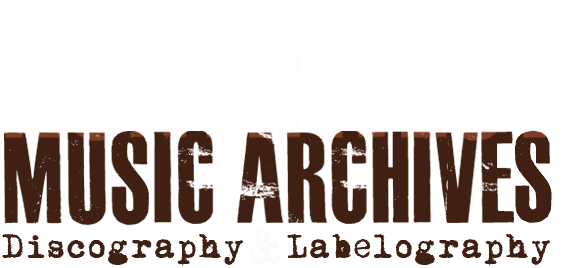
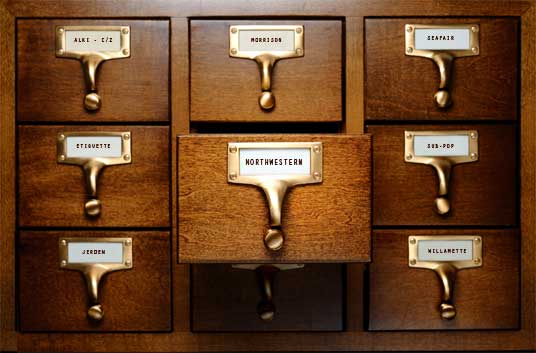
WATSON and his SILHOUETTES, CLAYTON
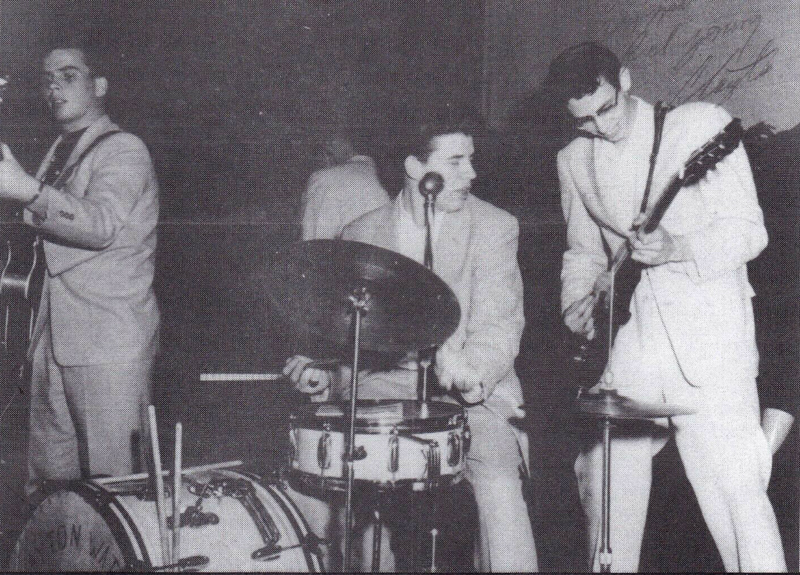 Homebase: Chehalis, WA.
Homebase: Chehalis, WA.
Stats: 1957-61
Original Members:
Clayton Watson - Vocals, Drums
Roger Jeffries - Guitar
Norm Lindscott - Piano
Carroll Hill - Sax
Randall Watson - Sax
Gary Elsey - Bass
Later Members:
Gary Edmonds - Guitar
Gary Hill - Guitar
Jerry Merritt - Guitar (1933-2001)
Jon Hickerson - Bass
Bill Morrell - Sax
Gary Scherer - Sax
SEE ALSO:
1.) LORD DENT and his INVADERS
2.) TRENDS, The
"CLAYTON WATSON: NORTHWEST '50s ROCKABILLY PIONEER"
by Peter Blecha
ROCKABILLY MUSIC has an obscure but interesting history in the Pacific Northwest. Because a number of small local recording studios were actively cutting sessions with numerous country/western musicians, it was inevitable that a few hot rockabilly sides would be released. Many of these were one-shot novelty efforts by players who probably could be found at the local grange hall on Saturday nights performing a much more straight style of country music – but rock music was beginning to sell, so they gave it a shot.
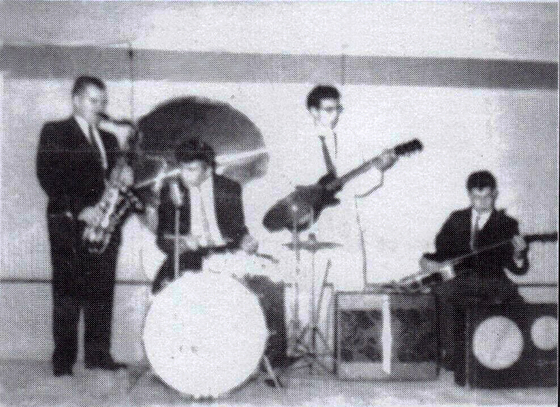 Clayton Watson and the Silhouettes, however, rocked from day one.
Clayton Watson and the Silhouettes, however, rocked from day one.
Formed in 1957 in Lewis County the band was comprised of six teenaged greasers: Clayton Watson (vocals, drums); Roger Jeffries (guitar); Norm Lindscott (piano); Carroll Hill (sax); Randall Watson (sax); and Gary Elsey (bass). Contacted recently, Clayton Watson recalls: “We played all over the Northwest. And we played all the time…because, see, it was new. And even though I was a nobody, just the fact that I had a rock band could get a crowd.” The DJs at Seattle’s giant KJR radio had begun throwing a few teen-dances and when they booked the Silhouettes, the band was hyped as “The First Rock ‘n’ Roll Band in the State.”
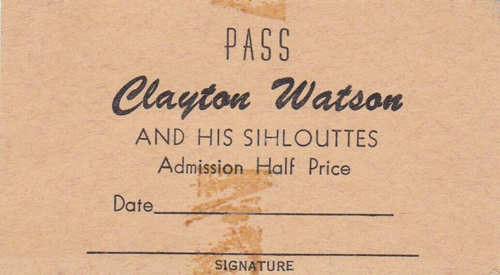 It was likely around April 1958 that the band booked time at Portland’s Northwestern Inc. recording studio and cut a couple original tunes. Then Watson decided to form his own record label – one that would be named in honor of the garish color of his hotrod: Lavender Records. As an early example of rock ‘n’ roll’s vaunted do-it-yourself indie spirit, their single “Everybody Boppin’” / “Tall Skinny Annie” sold like hotcakes at their dances, but failed to garner radio airplay.
It was likely around April 1958 that the band booked time at Portland’s Northwestern Inc. recording studio and cut a couple original tunes. Then Watson decided to form his own record label – one that would be named in honor of the garish color of his hotrod: Lavender Records. As an early example of rock ‘n’ roll’s vaunted do-it-yourself indie spirit, their single “Everybody Boppin’” / “Tall Skinny Annie” sold like hotcakes at their dances, but failed to garner radio airplay.
But the band did catch the attention of the region’s top dance/concert promoter, Pat Mason who began booking them on tours all around the Northwest. Watson’s memories are of the primal days of Northwest rock: “I can remember Paul Revere coming up to a dance – he was younger than me by a couple of years – and he said he wanted to start a band, and how did he go about it? [laughter] Here he [later] made millions and I play weekends! [laughter]"
As it happened, Pat Mason had begun handling tour logistics for numerous stars, and the Silhouettes benefitted. During a time period when Gene Vincent’s Bluecaps had disbanded and Mason was managing the singer (while he lived locally), Watson’s band backed the star at many shows. “We traveled with names like Jerry Lee Lewis and Bill Haley and his Comets using my group either as a backup for the name or traveling along with the name band.”
It was in 1959 that the Silhouettes were spotted by Tacoma big-band leader Art Mineo who doubled as a talent scout for Golden Crest Records, the New York-based label that were then enjoying the success of Tacoma’s Wailers who had scored a national radio hit with their instrumental tune, “Tall Cool One” (Billboard #36). The label was interested but suggested that the Silhouettes record only instrumentals. Oh, and a name change would also be in order. The band – which by this point had undergone several personnel changes – finally settled on: Lord Dent and the Invaders. Lord Dent? “Well,” explained Watson, “my nickname was ‘Dent’ because I had two accidents in my car.” Golden Crest’s subsidiary label, Shelley Records, soon released the Invaders’ two-sided classic: “Wolf Call” / “The Greaser.”
Playing all those gigs while backing the stars over the years had additional career benefits for Watson: “I developed friendships with some of these people and I got calls to work steady on the road as a drummer, with like the Bluecaps, Buddy Knox and the Rhythm Orchids, and Bobby Freeman. I made my living that way for about two years.” It was 1963 when Watson retooled by forming a new band, the Trends and began working the Las Vegas scene for several years. After returning home, the Trends morphed into a country band whose current lineup includes Watson; his son Kevin (keyboards); Ken Thomas (guitar); and bassist David Shriver (formerly with Eddie Cochran, Donnie Brooks, and Trini Lopez).
[Note: This is an edited version of an essay that originally appeared in the “Northwest Music Archives” column of Seattle’s The Rocket magazine back in November, 1983.]
Text copyright © 1983, 2014 by Peter Blecha.
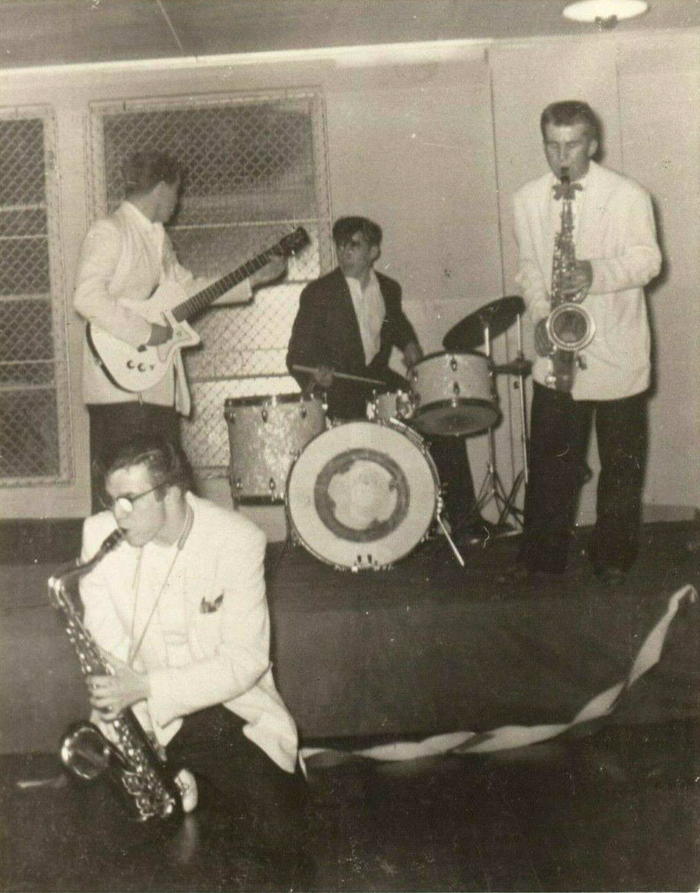
Clayton Watson (drums); Bill Morrell (sax).
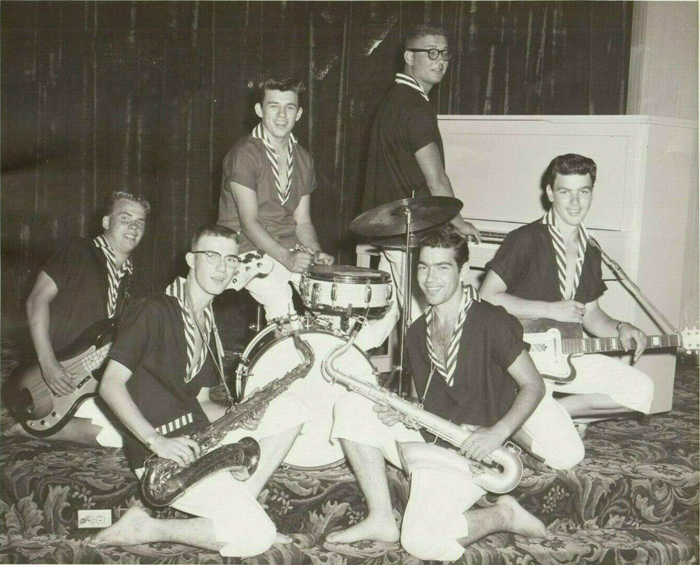
John Hickerson (bass); Carroll Hill (sax); Clayton Watson (drums); Norm Linscott (piano); Bill Morrell (sax); Gary Hill (guitar).
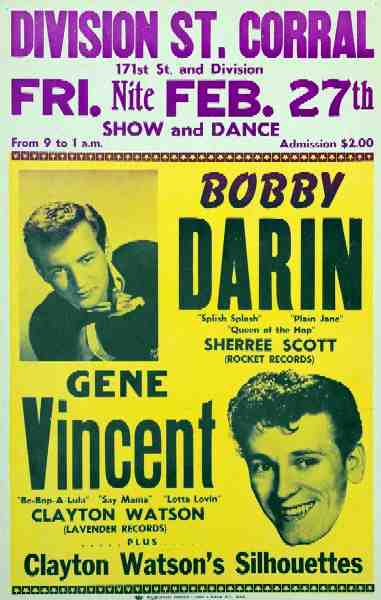
"WATCHING the EVOLUTION of ROCK 'N' ROLL
by Judy Marks / The Chronicle / May 27, 2005
[ https://www.chronline.com/stories/watching-the-evolution-of-rock-n-roll,230699 ]
It's been about half a century since the birth of rock 'n' roll, but Clayton Watson remembers it as if it were yesterday. Not surprising, as he was present as some of rock's seminal acts began and built their careers in the nation's dance halls and Grange halls, when the music was loud, the hair was slick and the parents wondered what was happening to their sweet boys and girls.
In the annals of Northwest rock, Watson himself figures largely, heading one of the region's earliest rock bands, Clayton Watson and the Silhouettes, sometimes known as Lord Dent and the Invaders. The drummer, now 65, laid down his sticks about five years ago, but he is still a walking encyclopedia of the people and places that shaped rock 'n' roll.
Watson, from a large and musical Lewis County family, at the tender age of 7 years old began a career that would take him from the erstwhile Dreamland dance hall in Tenino and Playquato in rural Chehalis, to a variety of venues all across the United States. That first job was with a Bucoda band headed by a woman Watson remembers as "Ma Perkins."
"We played mostly in Grange halls — sometimes the Rochester Grange, sometimes the Skookumchuck Grange," Watson recalled. "There would usually be a break at midnight, with a buffet or something I'd play until we ate at midnight, then I'd fall asleep on a bench and the rhythm guitar player would take over for me, and they'd take me home afterwards."
The pay wasn't great — Watson recalls his cut as about $5 a night — but it made him the wealthiest 7-year-old in his circle of friends. "I bought my own BB gun," he remembered with chuckle.
A later stint with the Shelton band Arkie and His Jolly Cowboys gave Watson, then about 14 years old, a background in country and western music. Another of the early groups Watson drummed in was the Mossyrock-based Gene Fleming Orchestra, which played mostly big band music through the mid-1950s. When it was time for two of the young men in the orchestra to attend college, Watson tagged along, "even though I wasn't old enough to go to college."
They formed a group, Two Brothers and Two Others, and moved to Eugene, Ore., where Watson enrolled in high school while his bandmates attended the University of Oregon. "I worked in a music store half the day and went to high school for half," Watson said. "Then we played as a house band at night."
He returned to finish high school locally, graduating from Pe Ell High School in 1958, but having had more than a taste of the professional musician's life, Watson knew that would be how he would make his way. "I was doing something I loved — making music," he said. "Early on, I went to the Flemings and said I was going to start my own band. They said, 'You don't know how to start a band, or how to run a band.' But I did it."
Watson rounded up two tenor saxophone players, one baritone sax player, a guitarist, a bass player and a pianist, and with himself on the drums, Clayton Watson and the Silhouettes were born. Watson's vocal talents were modest, he said, "but I wrote the songs, so who better to sing them?"
One of the more popular local venues where they played was the Centralia Rollerdrome, and it was there that Watson met the young girl who would become his wife. She went dancing by me at the Rollerdrome, and I said to one of the guys, 'I'm going to marry that girl,' " Watson said. What he didn't know was that the girl was just 13 years old, and had parents who were not about to let their daughter date a musician, much less marry one. "I'd ask her mother over and over, 'Can I take Gayle out?' " Watson said. The answer, he recalled, was a consistently loud "no," followed by an equally loud slam. "Finally she said, 'I'll let you take Gayle out on a Sunday, but you have to have her back before dark … and pick up a loaf of bread on the way home.' "
Gayle Petersen become Gayle Watson at 16, and today shares her husband's enjoyment in recounting those early days of piling the young and growing family into their '56 Chevy and traveling from town to town. "We had the two of us in the front seat and the drums in the back seat, and we had two little kids and all the clothes we needed," Gayle said. "How did we fit it all in? The trunk was only so big. "Our baby daughter would be asleep on the top of one of the drums, very content," she said. "We'd get a little motel room, and I'd make macaroni and cheese, just like young couples do today."
And so the family joined Watson, following the music and all the while collecting singular memories. "At 19, 20, I was on the road doing one-night stands," he said. "I worked with Buddy Knox, of 'Party Doll' fame. "When we were on the road, he was 24, 27, somewhere in that area," he said. "Buddy Knox's band was already making it when Buddy Holly came along. We'd be at some hall somewhere in South Dakota, and I'd say, 'What are we doing way out here?'
"He'd just grin at me and say, 'Just wait.' I'd set up my drums and go change my clothes and come back, and there'd be 900 people there. It'd be so hot, I'd sweat so hard I couldn't see. But I was young, and it was a lot of fun."
Watson recalls one eventful booking the band secured through its Minneapolis-based agency in 1959. "They had us booked somewhere in Minnesota," he said. Trouble was, the agency mistakenly scheduled two other bands for the same venue, the same night. "We showed up and so did Conway Twitty and the Twittybirds, and Johnny Preston," Watson recalled with a grin. A coin toss decided Buddy Knox's group would take the booking, but "they all just stayed and jammed with us, and it was one of the best times I ever had. "And the audience absolutely loved it."
With the Silhouettes, Watson was more of a regional act, but they were never at a loss for good bookings. "We traveled with Jerry Lee Lewis; we opened for him," Watson said. "He had about two or three hits at that time, and I remember one night in a club in Portland, I did 'Whole Lotta Shakin' Goin' On.'"While we were performing it, I could look backstage and see him standing there, glaring at me with his arms crossed," Watson said. "When we were done, Jerry said to me, 'Do you want to finish this tour? Then don't ever sing another one of my songs on this tour.' "Geez, I felt terrible," Watson said. "But what did I know? I was 18 or 19."
A more permanent — perhaps a more pleasant — memento of working with the Killer is a photograph of Watson and his Silhouettes horsing around with Lewis. That photo is the cover art for a compilation CD of vintage Northwest rock 'n' roll. Among the songs Watson wrote and the group recorded were "Tall Skinny Annie," "The Greaser" and "Wolf Howl."
When the Silhouettes disbanded, Watson joined another group, the Trends, that would have several incarnations over the coming years. As their children — finally numbering three — grew, Watson decided it was time to take a day job. He worked for a while as a produce manager at Safeway, and when he tired of that he found other jobs, but the lure of music was always there.
Then someone asked him if he wanted to play at the old Riverside Tavern, then just outside Centralia's city limits, on the weekends. They didn't have to ask twice. "We used to pack that place," Watson said. "There was no dancing in the city limits in those days. We had Gary Edmonds on guitar, Denny McGaughy on bass and vocals, Carroll Hill on sax," he said. "I called the songs. I called a lot of two-beaters — real rockabilly stuff." There were more gigs, more shuffling of band members, and up until a few years ago, the occasional oldies concert. Watson even earned a place in the Rockabilly Hall of Fame.
When he laid down his sticks for the final time, he said, it was "for no particular reason. I just decided it was time," he said. "Geez, I'd been doing it since I was 7."
So for several years, the Watsons have been content to operate their his-and-hers antiques stores, the Saltbox and the Olde Mercantile, in Grayland. They wait on customers browsing among again-fashionable relics of yesteryear to a quiet backbeat of "Goodnight, Irene," "Autumn Leaves" — the good stuff.
Although he says he's played his final gig, sometimes a voice comes out of the blue from someone who just wants to hear the stories. With his unique historical perspective, Watson is happy to oblige.
MISC NOTES: Northwestern Recording, Inc. (411 SW Thirteenth Avenue, Portland) mailed a billing invoice to Clayton Watson for recording time on 4.12.58. Doug Bright and Clayton Watson formed Lavender Records in 1958, then Bright managed it, then he sold it to Pat Mason for one dollar.
LOCATION: Portland
RECORDING PERSONNEL: John Hickerson (bass), Bill Morrell (sax), WClayton Watson (drums), Carroll Hill (sax), Norm Linscott (guitar); Gary Hill (guitar).
RECORDING STUDIO: Northwestern Recording, Inc.
RECORDING ENGINEER: Bob Lindahl
FORMAT: disc
SIZE: 7"
SPEED: 45 rpm
DISC NOTES:
"Everybody Boppin' " Album Reissues:
As CLAYTON WATSON] Disc one track #2 on Wild And Wooly - The Northwest Rock Collection (Experience Music Projecf EMPCD - 001) compilation CD. 2000
Side One Track #1 on Everybody Boppin' (Norton Records NW 910) compilation LP. 2002
(Alternative Version) Side two, Track #5 on Shake Um Up (Norton Records NW 912) compilation LP 2002
"Tall Skinny Annie" Album Reissues:
2002. Side One Track #8 Everybody Boppin' compilation LP (Norton Records NW 910)
A-SIDE MATRIX:
A-SIDE STAMPER CODE:
A-SIDE COMPOSER: Bright - Watson
A-SIDE PUBLISHER:
B-SIDE MATRIX:
B-SIDE STAMPER CODE:
B-SIDE COMPOSER: Bright - Watson
B-SIDE PUBLISHER:
MISC NOTES: Side A Song A
LOCATION:
RECORDING PERSONNEL:
RECORDING STUDIO:
RECORDING ENGINEER:
FORMAT: disc
SIZE: 7"
SPEED: 45 rpm
DISC NOTES: 4 song EP
A-SIDE MATRIX:
A-SIDE STAMPER CODE:
A-SIDE COMPOSER:
A-SIDE PUBLISHER:
B-SIDE MATRIX:
B-SIDE STAMPER CODE:
B-SIDE COMPOSER:
B-SIDE PUBLISHER:
MISC NOTES: Artist name on disc = Clayton Watson And His Silhouettes. Song co-writer Bright was the band's road manager.
LOCATION: Portland
RECORDING PERSONNEL:
RECORDING STUDIO:
RECORDING ENGINEER:
FORMAT: disc
SIZE: 7"
SPEED: 45 rpm
DISC NOTES: 4 song EP
A-SIDE MATRIX:
A-SIDE STAMPER CODE:
A-SIDE COMPOSER: Hayward - Gershwin
A-SIDE PUBLISHER:
B-SIDE MATRIX:
B-SIDE STAMPER CODE:
B-SIDE COMPOSER: Bright - Watson
B-SIDE PUBLISHER:
[caption id="attachment_35903" align="alignleft" width="600"] The Silhouettes, live at the Centralia Rollerdrome, ca. 1958[/caption]
The Silhouettes, live at the Centralia Rollerdrome, ca. 1958[/caption]
MISC NOTES: All songs recorded in 1958-'59. This alternate / previously unreleased take of "Everybody's Boppin' was accessed via an acetate reference disc from Watson's collection. The other songs here were discovered in Watson tape archive. "Skinny Lou" is the same song as Watson's "Jenny Lou" -- but vocals were added by Glen Dahl. Female backing vocals on "No No No" were provided by a few kids from the Centralia High School girls choir.
LOCATION: Seattle
RECORDING PERSONNEL: Clayton Watson (drums / vocals); Glen Dahl (vocals);
RECORDING STUDIO: Joe Boles Custom Recorders
RECORDING ENGINEER: Joe Boles
FORMAT: disc
SIZE: 7"
SPEED: 45 rpm
DISC NOTES: 4-song EP
A-SIDE MATRIX:
A-SIDE STAMPER CODE:
A-SIDE COMPOSER: Watson
B-SIDE MATRIX:
B-SIDE STAMPER CODE:
B-SIDE COMPOSER: Watson
MISC NOTES: Previously unreleased.
LOCATION:
RECORDING PERSONNEL:
RECORDING STUDIO:
RECORDING ENGINEER:
FORMAT: disc
SIZE: 12"
SPEED: 33 1/3 rpm
DISC NOTES:
Side 1, track #9 on Shake Um Up Rock compilation LP.
MISC NOTES:
Not previously released
LOCATION:
RECORDING PERSONNEL:
RECORDING STUDIO:
RECORDING ENGINEER:
FORMAT: disc
SIZE: 12"
SPEED: 33 1/3 rpm
DISC NOTES:
Side 2, track #6 on compilation album Everybody's Boppin'
MISC NOTES: Previously unreleased.
LOCATION:
RECORDING PERSONNEL:
RECORDING STUDIO:
RECORDING ENGINEER:
FORMAT: disc
SIZE: 12"
SPEED: 33 1/3 rpm
DISC NOTES:
Side two, track #2 on Everybody's Boppin' compilation LP.